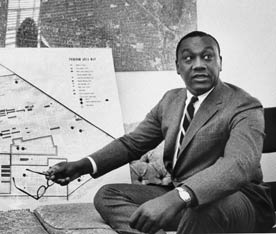The Winds of Change
As much as the rural-serving CDCs have evolved, these newly focused organizations are still exposed to literal and symbolic winds of change. Only time will tell if the Gulf hurricanes and super-tornados are part of a long-term weather pattern, but the political winds shaping rural policy can be as devastating. An issue that may seem pure semantics to many — the definition of “rural” — is absolutely critical in determining how public resources flow into ex-urban America.
Rural CDCs have also seen profound changes in the way in which these local organizations receive funding. The initial transition from 100-percent grants to subsidized loans has further morphed into increasingly complex subsidy-recapture formulas and required matches. There are more restrictions placed on who receives public funds, and subsidies for rural community-development have decreased. The USDA Rural Development’s (RD) historically dominant presence in rural America continues to fade, after a decade-long pattern of closing and consolidating county offices and reducing field staff. Rural CDCs depend on RD not just for housing but for community facilities and economic development as well. The reduction in RD’s field staff has created a shift in a host of customer-related services, including the elimination of or drastic cutbacks in pre- and post-purchase homebuyer education and financial counseling, loan packaging, and construction management.
These changes have served to pressure rural CDCs to refine their business models, balancing missions of service to economically disadvantaged clients with cost-based fee schedules for service rendered. They’ve also had to develop political clout through state, regional, and national coalitions and to exercise that clout by becoming far more engaged in the process of designing community-development policy at federal, state, and local levels.
Organizations such as Stand Up for Rural America, the National Rural Funders Collaborative, and the W.K. Kellogg Foundation’s Rural People Rural Policy program have gained traction as the rural side of the community-development field becomes engaged in rural policy discussions.
Over the 30 years that NeighborWorks America has been in existence, rural communities have experienced tremendous growth. But they are no longer simply proving grounds for a largely urban-based community-development field. Innovative, entrepreneurial CDCs serving diverse markets within newly defined economic regions are rapidly gaining strength.
Formidable challenges remain. Much of rural America has substandard housing and lacks educational and employment opportunities. It will take a concerted effort of public will, policy, and community-based infrastructure to fundamentally change underserved rural regions.
Before rural CDCs can take on bigger challenges, organizational sustainability must be addressed. Increasingly, nonprofits are turning to the private sector for best business practices that don’t rely on public subsidies. In the orchestration of healthy, sustainable business models, cost-analysis and cost-recovery are crucial areas to emphasize. However, as rural CDCs cover larger service areas, it will be increasingly difficult to maintain a clear sense of community. (See Balancing Act.)
Two frontiers may have to be explored simultaneously and with equal vigor. First, rural-serving CDCs are well-advised to continue developing and refining sustainable business models. Second, practitioners must be linked to the process of generating public policy at all levels of government. It may be time for a newly articulated vision of a healthy rural America, a vision with clear goals that the nation can work toward, together.





Comments